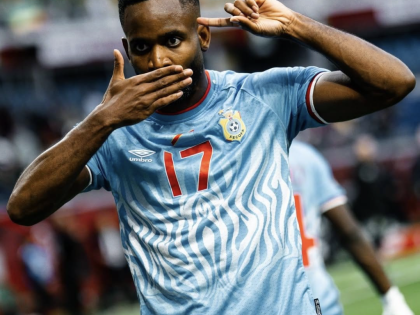#Kony2012 and British media
A review of UK media coverage of the viral politics of the misguided #Kony2012 social media campaign.

Uganda's President Yoweri Museveni in 2012 (Russell Watkins / DFID Flickr CC.)
To British eyes the polished, high-gloss viral campaign of Invisible Children’s 26 minute video–with its high-end production, fast paced edits and expensive motion graphics–clearly favors the grabby style of American political campaign imagery, a style that is increasingly adopted in the British party political broadcasts too. It’s an immersive, yet distinctly oppressive style of polemic film making. Apart from Charlie Brooker’s takedown on Channel 4’s “The 10 O’Clock News” “10 O’Clock Live” show (where we learned of Jason Russell’s extensive music video oeuvre), how are the rest of British media reporting and analyzing this #Kony2012 business?
According to YouTube analytics, Kony 2012 has been most popular among the ‘Female 13-17’, ‘Male 13-17’ and ‘Male 18-24’ categories . John Vidal, The Guardian’s environment editor, in a video on the Guardian’s website commented: ‘this video is aimed at children, narrated to children and even involves the children of the film maker’—he’s unsurprised with the popularity amongst the younger generation of the world, who are at home with this MTV-crisis-issue kind of film making.
In a review of the video itself Peter Bradshaw of the Guardian writes; ‘it can’t be considered great documentary-making. But as a piece of digital polemic and digital activism, it is quite simply brilliant’.
Perhaps because of their glaring soft spots for all things digital and sentimental, the Guardian were caught flat-footed. From their man who is tasked with covering the whole of Africa, David Smith, there has been ne’er a murmur (perhaps he’s been at the theater?).
While Bradshaw hummed and hawed about how “principled” the whole thing seemed, the Guardian’s right-wing rival, the Daily Telegraph, immediately (right when ‘Kony 2012’ went live) put out a zinger of a piece from Nairobi by Mike Pfanz, who described “growing outrage in Uganda” and canvassed a strong range of informed Ugandan opinion well before everybody else in the Western media decided to do the same. The fascist and celebrity obsessed Daily Mail, most read news site in the Western world, came late to the story. So far the Daily Mail’s army of commenters (made famous at the end of last year in Esquire’s feature on the Daily Mail, titled “Bullshit.com”) have roundly denounced Kony2012 as a “scam” and “propaganda”.
The debate was presented initially interchangeably throughout the UK media, who were merely detailing information of Invisible Children, the viral and it’s ensuing ‘outrage’. Most of these media reserved their online platform to publish more outspoken opinions.
The Guardian utilized their site to call for open collaboration, running a feed that gathered a myriad of perspectives from academics, charity workers, journalists and blogs. In addition, providing a selection of old articles their reporters had written on Uganda to provide breadth and depth to the issues raised.
An article published by the American publication, Foreign Affairs, in November 2011 resurfaced and offered the most comprehensive record of the U.S.’s intervention in Uganda. One of the authors of the piece Mareike Schomerus, at the London School of Economics, told a Channel 4 news reporter that Invisible Children’s primary ambition of forcing the arrest of Kony was ‘naive and one dimensional’. The reaction and its call for transparency led Invisible Children to respond, which they did, but it did little to calm the fiercest reactions that were the most deeply felt.
A blog post by poet and writer, Musa Okwonga (his family is from Northern Uganda), who had been one of the first in the UK to write about Kony2012 on The Independent’s blog pages (Elliot commented on Okwonga’s critique of Kony2012 on this blog) was also later interviewed on Channel 4 News. Okwonga said that the viral depicted a ‘painfully familiar tale’ which ‘has unpleasant echoes of colonialism’. A ‘paternalism’ that seems to have dominated the Western methods of presenting the ‘African story’. But he stated that, ‘on the other hand, I am very happy – relieved more than anything – that Invisible Children have raised worldwide wariness of this issue’.
There was a clamor to include “authentic African voices.” The same set of people on Twitter and African bloggers, mostly based in the West, listed by American publications like The New York Times and The Atlantic, were listed here. The Youtube video response by Ugandan journalist Rosebell Kagumire, to Kony2012, was widely referenced.
If there is one clear aim that has been achieved by Invisible Children’s viral is that it has brought Joseph Kony into the minds of many. Unfortunately, to achieve this, the responsibility to impart a historically, contemporary and factually accurate picture of Uganda has been abused and floridly edited. Sanitizing a complex, multifaceted story down to clear divisions of good vs evil and raising Joseph Kony to the source and solution of all Uganda’s struggles, was the outcome.



















